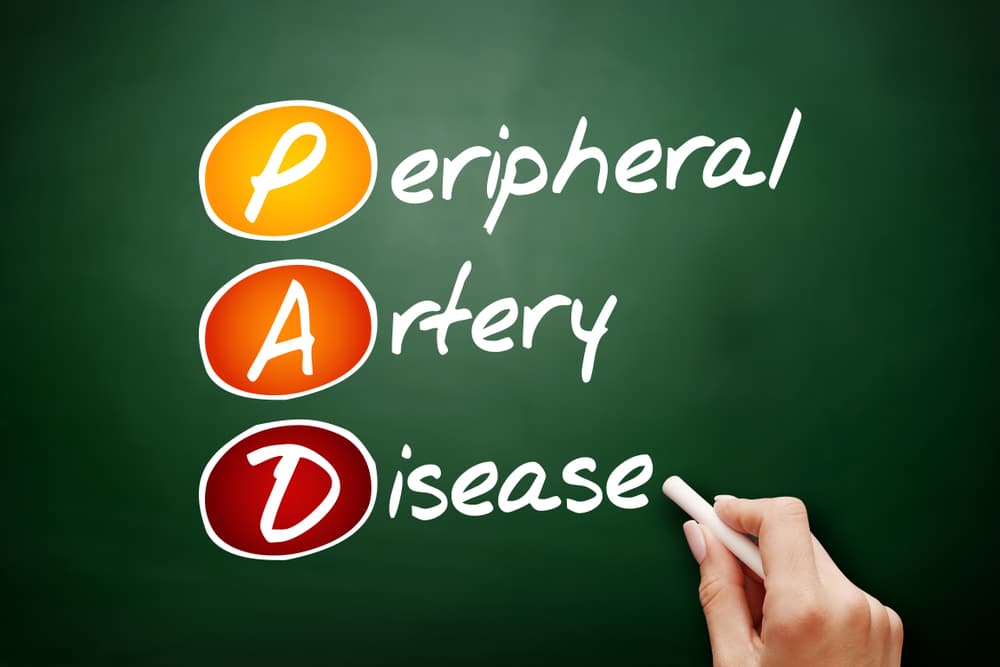What is Peripheral Artery Disease (PAD)?
Dr. Zakhary has vast experience in treating peripheral artery disease or PAD. Many people treating PAD in the valley have completed medical residency without formal surgical training. Dr. Zakhary is board certified in vascular surgery. He has completed 7 years of formal surgical training, including a vascular and endovascular surgery fellowship at Baylor University. He serves as an adjunct professor at Midwestern University.
His approach is conservative and successful. Many people with PAD are treated and live a healthy lifestyle with modifications and medication. Two of the most important things that you can do are to quit smoking and to reduce your cholesterol levels through a healthy diet, exercise, and if needed, medications. For those who require aggressive treatment, we offer both surgical and minimally invasive techniques such as angioplasty and stents which can be used to relieve blockages.
What are the causes of peripheral artery disease?
People who develop PAD commonly suffer from atherosclerosis, colloquially known as “hardening of the arteries.” This occurs when plaque (fatty material) builds up on the inner walls of the arteries. This narrows and clogs the arteries and decreases blood flow. In the legs, this can lead to pain and cramping when walking, and later can result in pain in the toes and feet when a person is resting. This is because the arteries are now unable to deliver enough blood to the feet. In its most advanced stage, this can lead into tissue necrosis, even possible amputation.
Common symptoms of PAD
When a person develops peripheral artery disease, they may not have any symptoms, or have only mild symptoms such as leg pain when walking, what is known as claudication.
Claudication symptoms include muscle pain or cramping in the legs or arms that is triggered by use of the limb, such as when climbing stairs. The symptoms usually disappear after a few minutes of rest. The location of the pain depends on the location of the clogged or narrowed artery. Pain is most common in the calves.

The severity of the claudication can vary from mild discomfort to debilitating pain that keeps the person from doing things such as walking around the grocery store.
These are common symptoms of peripheral arterial disease:
- Painful cramping in one or both of your hips, thighs, or calf muscles after certain activities, such as climbing stairs
- Leg numbness
- Leg weakness
- Sores on your toes, feet, or legs that won’t heal
- Coldness in your lower leg or foot, especially when contrasted with the other leg
- Color change in your legs
- Hair loss or slower hair growth on your legs and feet
- Slower toenail growth
- Shiny skin on your legs
- No pulse or a faint pulse in your legs or feet
- Erectile dysfunction in men
- Pain when using your arms, such as aching when writing or doing other movements with your hands
With these symptoms, the patient is in danger of losing possible toes or even a foot. The blockage needs to be addressed.
Peripheral Artery Disease Screening and Assessment:
We want to make you aware of a condition that affects as many as 12 million Americans. Peripheral Artery Disease (PAD) is often dangerously undiagnosed. It is a condition in which the arteries that carry blood to the muscles of the legs become narrowed due to the build-up of plaque. This is the same disease process that causes blockages in the heart.
Please take a moment to complete the brief PAD screening questions below. If you have any questions or concerns regarding your risk of PAD or if you would like more information please feel free to contact us.
Can Peripheral Artery Disease Be Cured?
There is no cure for PAD. The goal of Dr. Zakhary is to help the patient reduce the progression of the disease.
Can Peripheral Arterial Disease Be Treated in-office?
Most treatments for PAD, especially in the early stages, can be done in our comfortable offices on Thunderbird Road in Glendale. The goal of treatments is twofold: to manage symptoms such as leg pain so the patient can resume activities, and to stop the progression of atherosclerosis throughout the body to lower risks of heart attack and stroke.

These goals may be achieved, particularly early in the progression of a patient’s PAD, in-office. If Dr. Zakhary suspects PAD, he will likely order a vascular ultrasound, which we perform in office. These tests use sound waves to create an image of the vessel in question, and these images are displayed on a monitor. They can show blockage in an artery.
From there, a combination of medications and lifestyle changes may be all that’s needed.
These are the medications Dr. Zakhary may utilize for his PAD patients:
- Cholesterol-lowering medications — The goal with these medications is to lower the patient’s lipoprotein cholesterol (LDL) to less than 100 milligrams per deciliter (mg/dL) or lower if other risk factors are present, such as diabetes.
- High blood pressure medications — The goal for patient blood pressure is 130 over 80.
- Blood sugar medications — For patients with diabetes, controlling blood sugar levels is critically important.
- Medications to prevent blood clots — Slow blood flow can lead to the development of blood clots, so Dr. Zakhary may prescribe daily aspirin therapy or a drug such as Plavix.
- Symptom-relief medications — Certain drugs can increase blood flow to the limbs by thinning the blood and by widening the blood vessels. These can be especially effective for leg pain in patients with PAD.
If these conservative treatments don’t seem to be changing the patient’s situation, Dr. Zakhary may perform balloon angioplasty and place a stent in the area of the blockage.
What can happen if PAD is left untreated
Once your arteries have narrowed due to atherosclerosis, you’re rolling the dice by not seeking treatment. You’re at risk of developing these serious conditions:
- Critical limb ischemia — This condition begins as open sores that won’t heal, an injury, or an infection of your feet or legs. Critical limb ischemia occurs when the injuries or infections progress and cause tissue death. This can lead to amputation.
- Stroke and heart attack — If you have narrowing in your leg arteries, it’s likely not limited to your legs. Fat deposits also build up in arteries supplying your heart and brain, leading to strokes and heart attacks.
How can I prevent peripheral artery disease?
The key to not developing PAD is to maintain a healthy vascular system. These are ways to do that:
- Maintain a healthy weight.
- Eat a low fat, low sugar diet that includes at least five servings of fresh fruits and vegetables every day.
- Don’t smoke. If you do smoke, quit.
- Exercise for at least 30 minutes at least five times per week.
See What Our Patients Have to Say!
"This is one of the best doctor and staff I have ever been to. Dr Zakhary listens and treats you with respect. But what is also astounding is his staff. They never make me feel like a burden. They are professional but also kind. I have 5 different autoimmune diseases and so I go to many different doctors. This is the best Dr and Staffing have ever had the pleasure to be seen by."
Schedule Your Consultation In Scottsdale, AZ Today!
If you are interested in learning more about peripheral artery disease (PAD) treatment in the Glendale, Scottsdale, or Phoenix, AZ area, please call (623) 258-3255 to schedule your consultation with Dr. Zakhary today!

